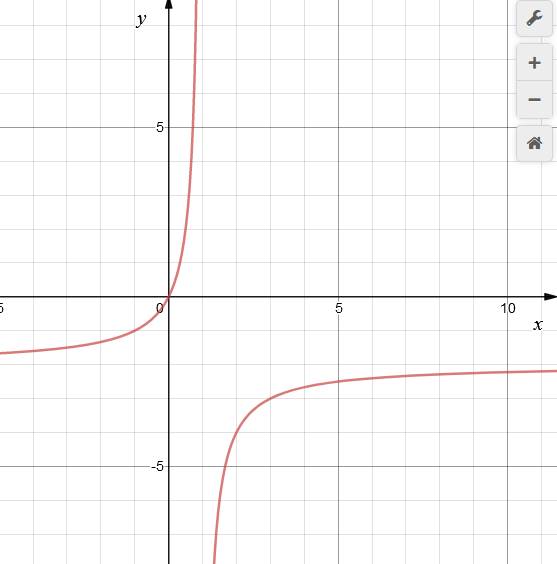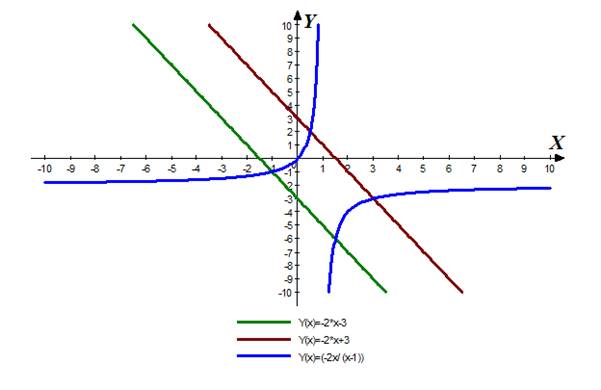
(a)
To find: the kind of given
(a)
Answer to Problem 39E
Here, the given curve represents a hyperbola.
Explanation of Solution
Given:
Calculation:
Given the following equation:
Comparing with the standard equation for a Quadratic Curve’.
Thus,
Now, discriminate
Since
Conclusion:
Hence, the given curve represents a hyperbola.
(b)
To solve: the given equation and sketch the graph.
(b)
Answer to Problem 39E
Here, the given equation of curve is
Explanation of Solution
Given:
Calculation:
The graph of the above function is plotted below.

Conclusion:
Hence, the given equation of curve is
(c)
To find: the equation for the line parallel to a line.
(c)
Answer to Problem 39E
Here, the equation for the line parallel to the line is
Explanation of Solution
Given:
Line
Calculation:
Slope of given line
For the lines to be normal to the curve,
For
Therefore,
So, the line is
Or,
For
Therefore,
So, the line is
Or
Adding the lines to the plot, the graph becomes:

Conclusion:
Hence, the equation for the line parallel to the line is
Chapter A5 Solutions
Calculus 2012 Student Edition (by Finney/Demana/Waits/Kennedy)
Additional Math Textbook Solutions
Thinking Mathematically (6th Edition)
Algebra and Trigonometry (6th Edition)
College Algebra with Modeling & Visualization (5th Edition)
Elementary Statistics: Picturing the World (7th Edition)
Calculus: Early Transcendentals (2nd Edition)
- A New Heating System A homeowner wants to replace their old heating system. Energy is measured in kilowatt-hours (kWh). It takes about 11,700 kWh of energy to heat the house for the winter. The current heating system uses natural gas and is 60% efficient, which means that for every 100 kWh of natural gas it uses, it produces 60 kWh of heat. With the homeowner's current system, it costs $975 to heat the house. Assume that natural gas costs $0.05/kWh and electricity costs $0.21/kWh. The homeowner also has an air conditioner that uses 2,500 kWh of electricity per year and produces 290 kWh of cooling for every 100 kWh it uses. They also have a water heater that uses 4,300 kWh of electricity per year and produces 90 kWh of heat for every 100 kWh it uses. These systems could also be replaced if there is a cheaper option, but it isn't necessary. Here are three other types of heating systems the homeowner could replace their current system with: • A new furnace which also runs on natural gas…arrow_forwardFind a unit normal vector to the surface f(x, y, z) = 0 at the point P(-3,4, -32) for the function f(x, y, z) = In -4x -5y- Please write your answer as a vector (a, b, c) with a negative z component, and show your answer accurate to 4 decimal placesarrow_forwardFind the differential of the function f(x, y) = 2x² - 2xy – 5y² at the point (-6, -5) using Ax = 0.3 and Ay = 0.05. dz = Now find Az and compare it to your answer above Ax= Hint: If entering a decimal, round to at least 5 placesarrow_forward
- Find the differential of the function f(x, y) = −8x√y at the point (1,3) using Ax = 0.25 and Ay = -0.15. dz Now find Az and compare it to your answer above Az = Hint: If entering a decimal, round to at least 5 placesarrow_forwardplease dont use chat gpt i need to underarrow_forwardChris Lynch plans to invest $200 into a money market account. Find the interest rate that is needed for the money to grow to $1,800 in 12 years if the interest is compounded quarterly. The rate is %. (Round to the nearest percent.)arrow_forward
- Find the interest earned on $10,000 invested for 6 years at 6% interest compounded as follows. a. Annually b. Semiannually (twice a year) c. Quarterly d. Monthly e. Continuouslyarrow_forward6.9x y= 100-x a. Find the cost of removing each percent of pollutants: 50%; 70%; 80%; 90%; 95%; 98%; 99%. 50% y = 70% y = 80% y = 90% YF 95% y = 98% y= 99% V =arrow_forwardThe cost per ton, y, to build an oil tanker of x thousand deadweight tons was approximated by 215,000 C(x)= x+485 C(25) C(100) C(300) =1 C(50) = = C(200) = C(400) =arrow_forward
 Calculus: Early TranscendentalsCalculusISBN:9781285741550Author:James StewartPublisher:Cengage Learning
Calculus: Early TranscendentalsCalculusISBN:9781285741550Author:James StewartPublisher:Cengage Learning Thomas' Calculus (14th Edition)CalculusISBN:9780134438986Author:Joel R. Hass, Christopher E. Heil, Maurice D. WeirPublisher:PEARSON
Thomas' Calculus (14th Edition)CalculusISBN:9780134438986Author:Joel R. Hass, Christopher E. Heil, Maurice D. WeirPublisher:PEARSON Calculus: Early Transcendentals (3rd Edition)CalculusISBN:9780134763644Author:William L. Briggs, Lyle Cochran, Bernard Gillett, Eric SchulzPublisher:PEARSON
Calculus: Early Transcendentals (3rd Edition)CalculusISBN:9780134763644Author:William L. Briggs, Lyle Cochran, Bernard Gillett, Eric SchulzPublisher:PEARSON Calculus: Early TranscendentalsCalculusISBN:9781319050740Author:Jon Rogawski, Colin Adams, Robert FranzosaPublisher:W. H. Freeman
Calculus: Early TranscendentalsCalculusISBN:9781319050740Author:Jon Rogawski, Colin Adams, Robert FranzosaPublisher:W. H. Freeman
 Calculus: Early Transcendental FunctionsCalculusISBN:9781337552516Author:Ron Larson, Bruce H. EdwardsPublisher:Cengage Learning
Calculus: Early Transcendental FunctionsCalculusISBN:9781337552516Author:Ron Larson, Bruce H. EdwardsPublisher:Cengage Learning





